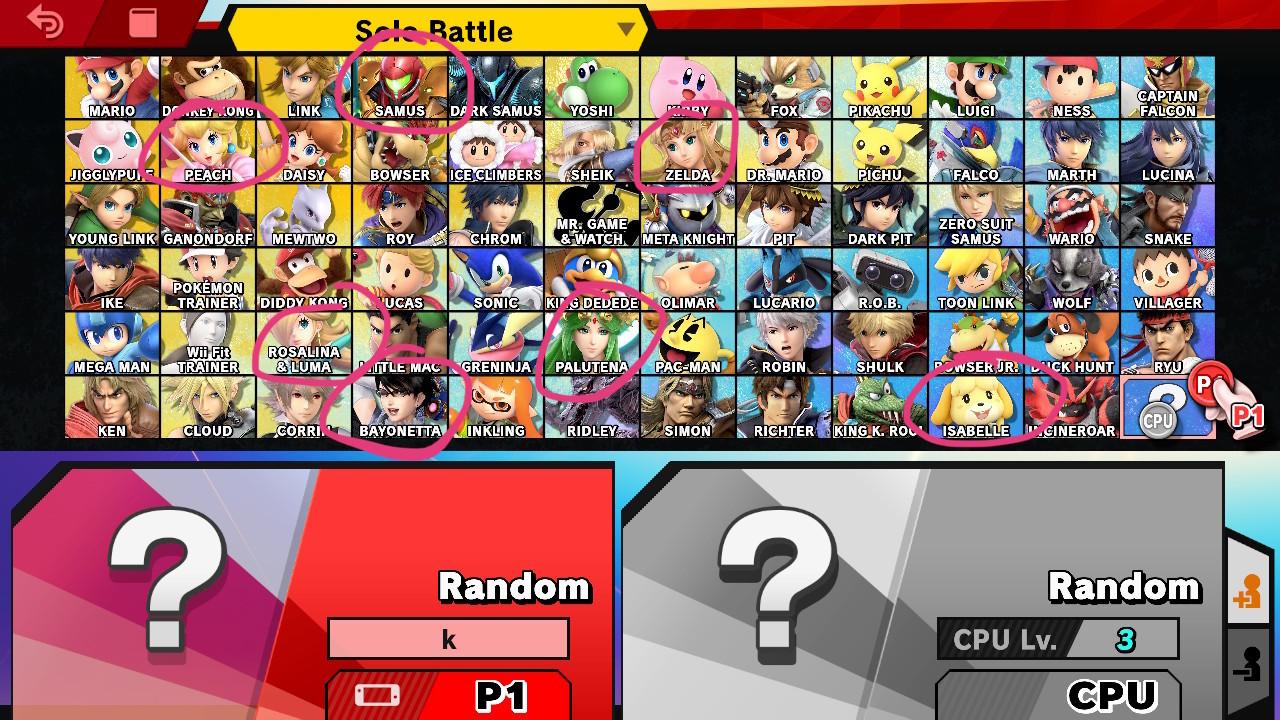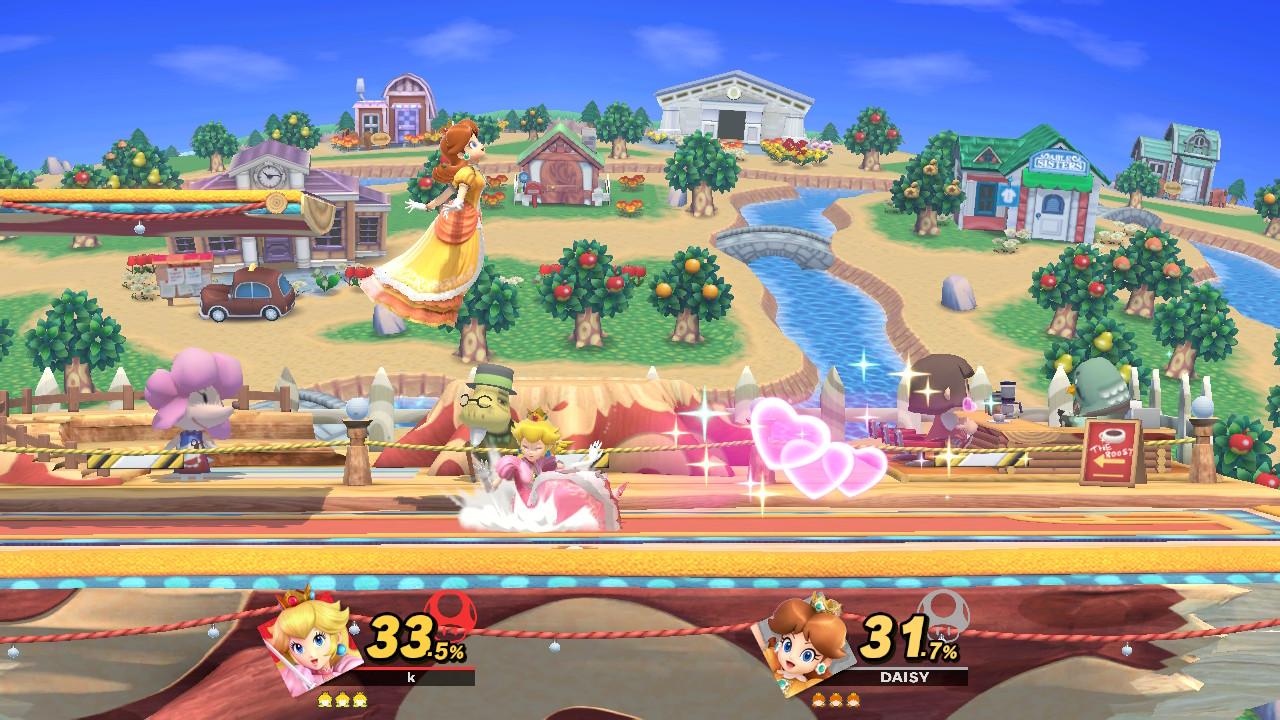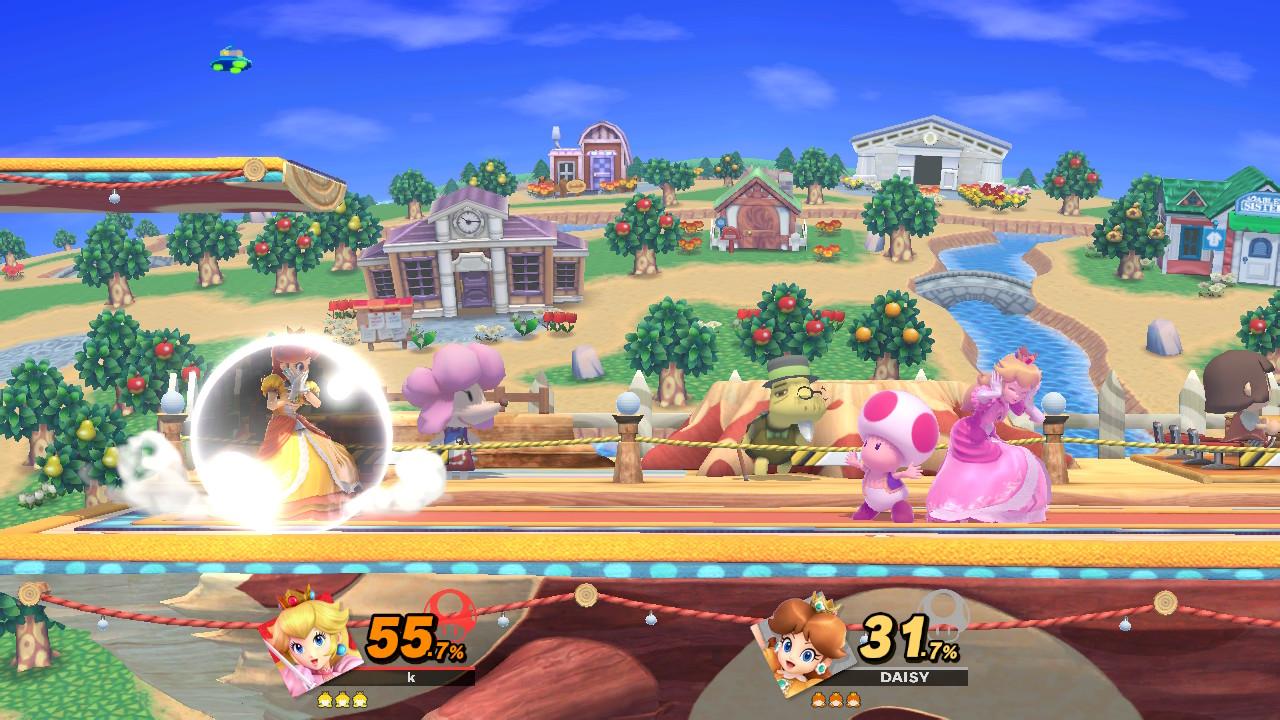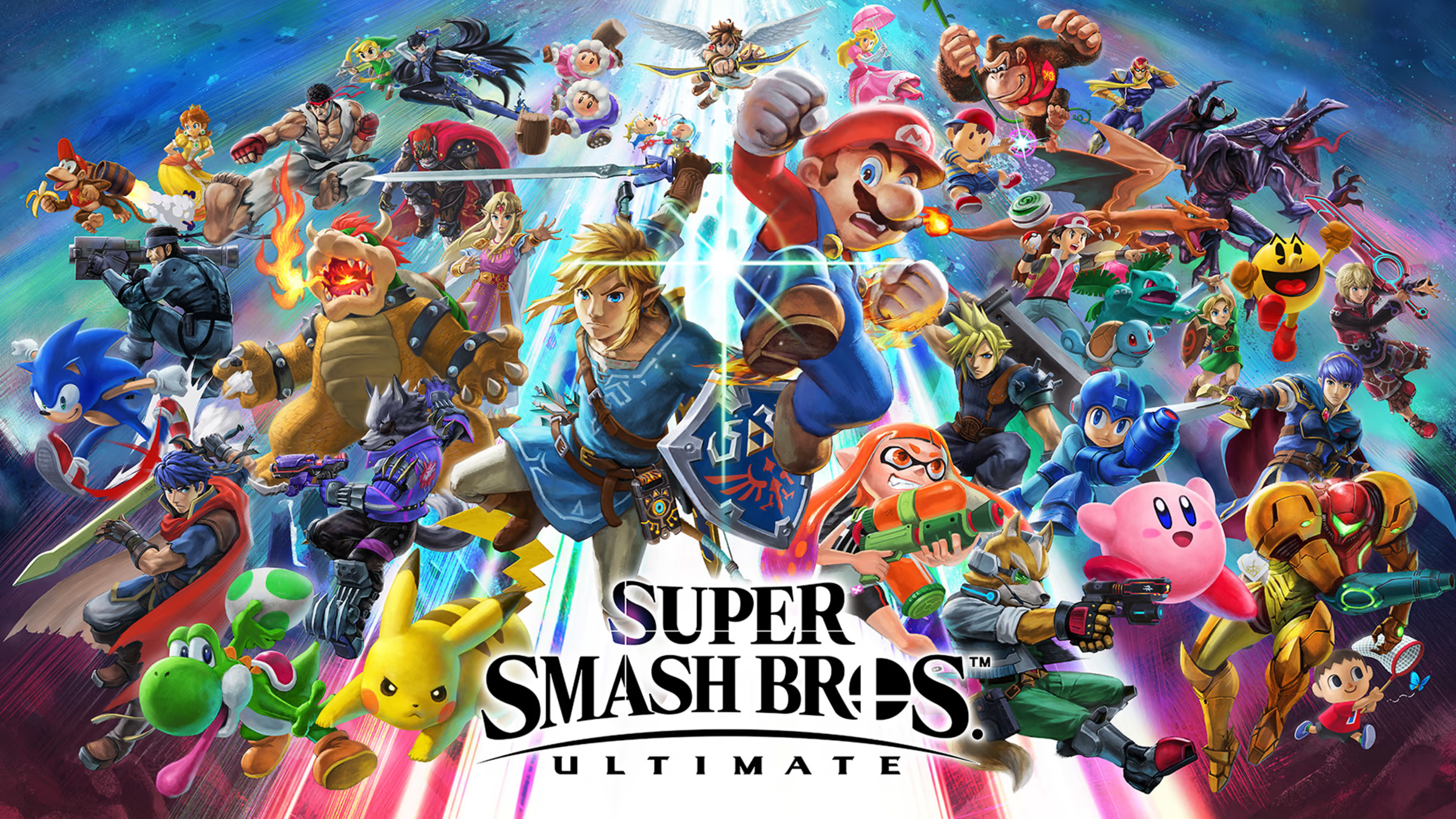Intro
For this week’s critical play, I decided to play Super Smash Bros Ultimate, a crossover platform fighting game directed by Masahiro Sakurai and published by Nintendo for the Nintendo Switch. The game features characters from Nintendo games and other third party franchises that players can choose from, and the goal of the game is to knock all other characters out of the arena to win. I specifically decided to focus on playing as Peach for this critical play, the princess from the Mario franchise who is always getting kidnapped and needing to be saved.
Since the mechanics of the game aren’t very hard to learn and there isn’t much to the game other than fighting, I would say the target audience is anyone who enjoys platform fighters.

Failure to Intertwine Feminist Theories
Playing this game through a feminist lens gave me a lot of mixed feelings. Starting with where I felt the game failed in intertwining feminist theories, the game does not have a very good representation of gender diversity in its choice of characters. There are technically about 28 female choices out of the 74 playable characters in the base game, but many of these choices are echo fighters (characters with the exact same moves as another character), the same exact person in different costumes, or are able to be played as a male instead (in fact, of the choices that allow you to be male or female, there are only 2 that default as female). Eliminating all of these characters, we end up with only 7 female characters, which is an insanely small number of choices.

Another way I felt the game failed with intertwining feminist theories was through character design, specifically when looking at Peach. As Chess states in Play Like a Feminist, “there is no shortage of examples demonstrating the sexist portrayals of female characters in games that are designed for a presumed masculine audience,” and Peach is no exception (pg. 56). I feel that Peach falls into the stereotypical “damsel in distress” stereotype, not only with how she looks visually, but also with her moveset. Her attacks are visually more dainty than male characters (slapping, creating magical sparks, etc.) and she rarely uses her own physical power to deal damage.

One of her most important moves, for example, features her plucking a vegetable from the ground which she can then throw as a projectile item. Another one of her moves has her covering her ears with a terrified expression and turning away as Toad appears in front of her, who deals damage for her if she is hit in this state.

Through my playing, I found that many of the other female characters in Smash share the same problems as Peach, which only perpetuates the misogynistic view that females are weak and need to be saved by others. While I recognize her visual design is mostly the fault of the Mario franchise (as they pulled her design from those games), her moveset was something that was controllable by the designers of Smash.
Success in Intertwining Feminist Theories
While the visual design choices of Peach fit her very squarely in the “damsel in distress” stereotype, she actually deals a pretty significant amount of damage in the game and is considered one of the most powerful characters if played correctly. This in a way challenges the stereotypical view of females in video games, as she is able to fight just as well as male characters despite having dainty looking moves and a princess visual.
Another way Smash successfully intertwines feminist theories is through Classic Mode, the alternative single-player mode in the game where you play as a specific character and fight through a predetermined series of opponents. Playing as Peach has her fight off opponents who appear as kidnappers in other Nintendo games, including her own captor in Mario games, Bowser. This narrative helps players establish a sense of control within a power dynamic, a feminist theory mentioned by Chess (pg. 62).
Improving the Game
When it comes to improving Super Smash Bros Ultimate from a feminist perspective, I think the most important thing that could be done is diversifying the playable characters to challenge traditional gender roles. In Peach’s case, for example, though being a “damsel in distress” is one of her key identities from the Mario franchise, her moveset could have been revised to include more feminist ideals. As the reading mentioned, “video games have a history that might tend toward misogyny, but have the overwhelming potential in their format to revise, rethink, and reprogram what it means to be a game.” Smash could have done this for example by giving her more visually hard-hitting moves and less reliance on objects/magic to do damage.
Discussion Question
While Smash lacks a traditional plot/narrative, how can the game still integrate feminist theories into its gameplay to foster inclusivity, challenge gender norms, and create a more empowering experience?




